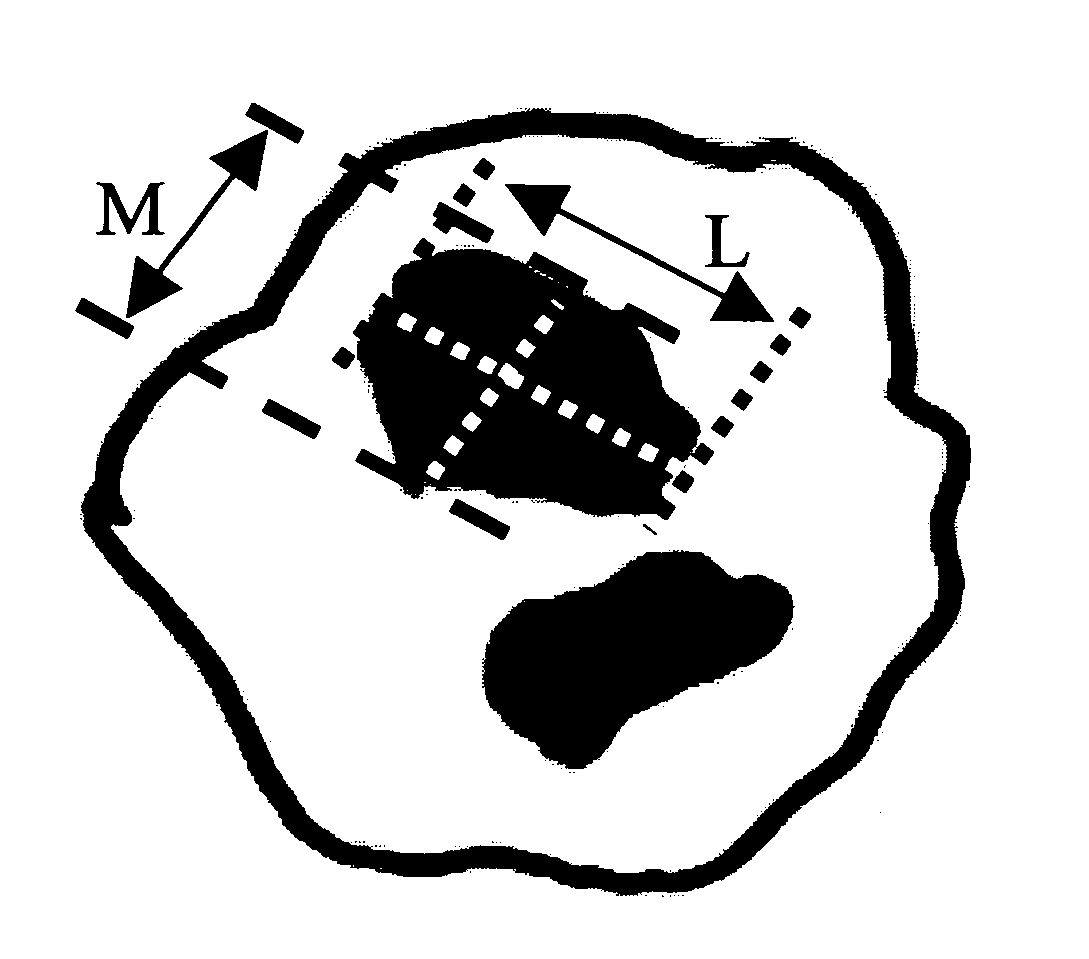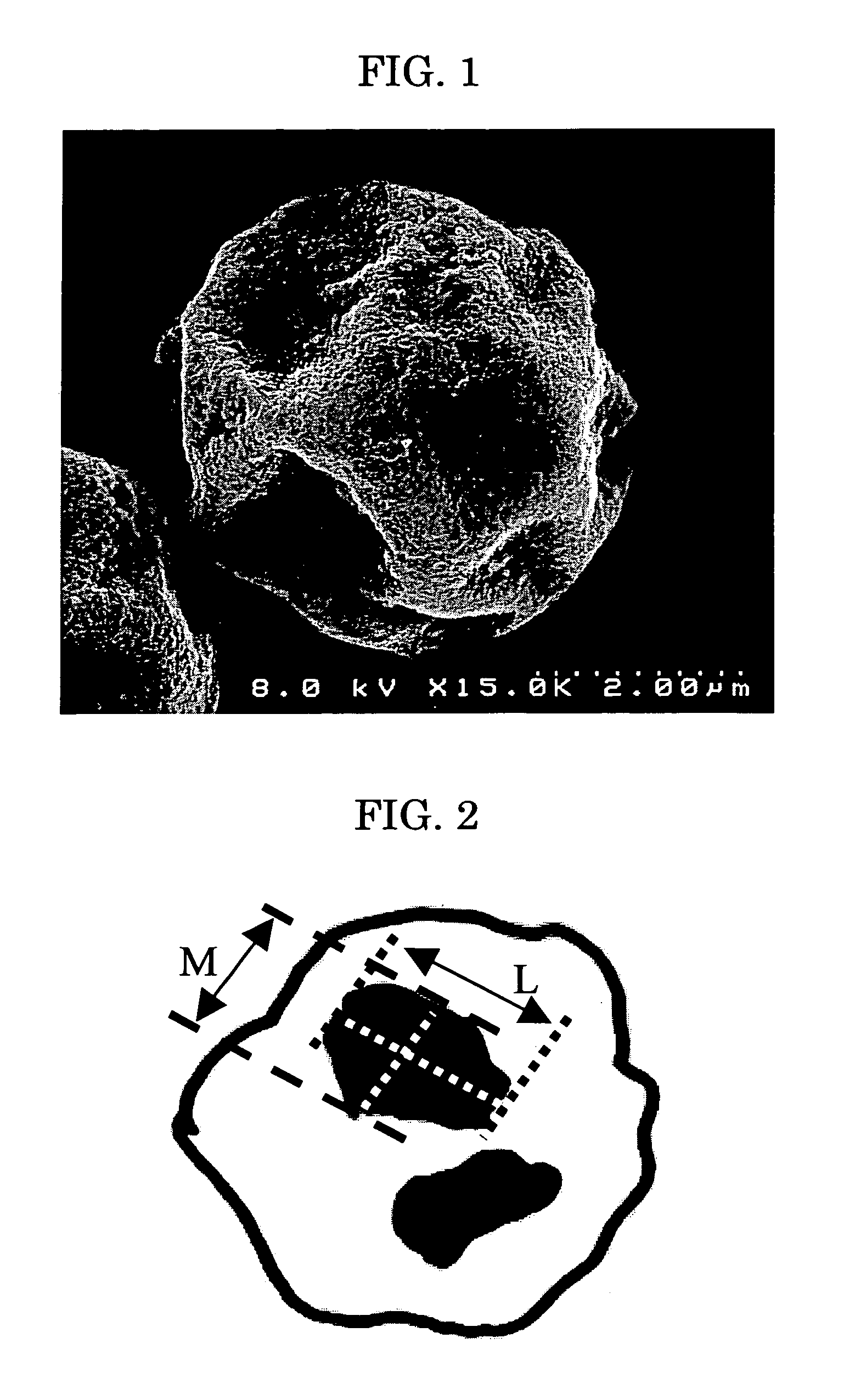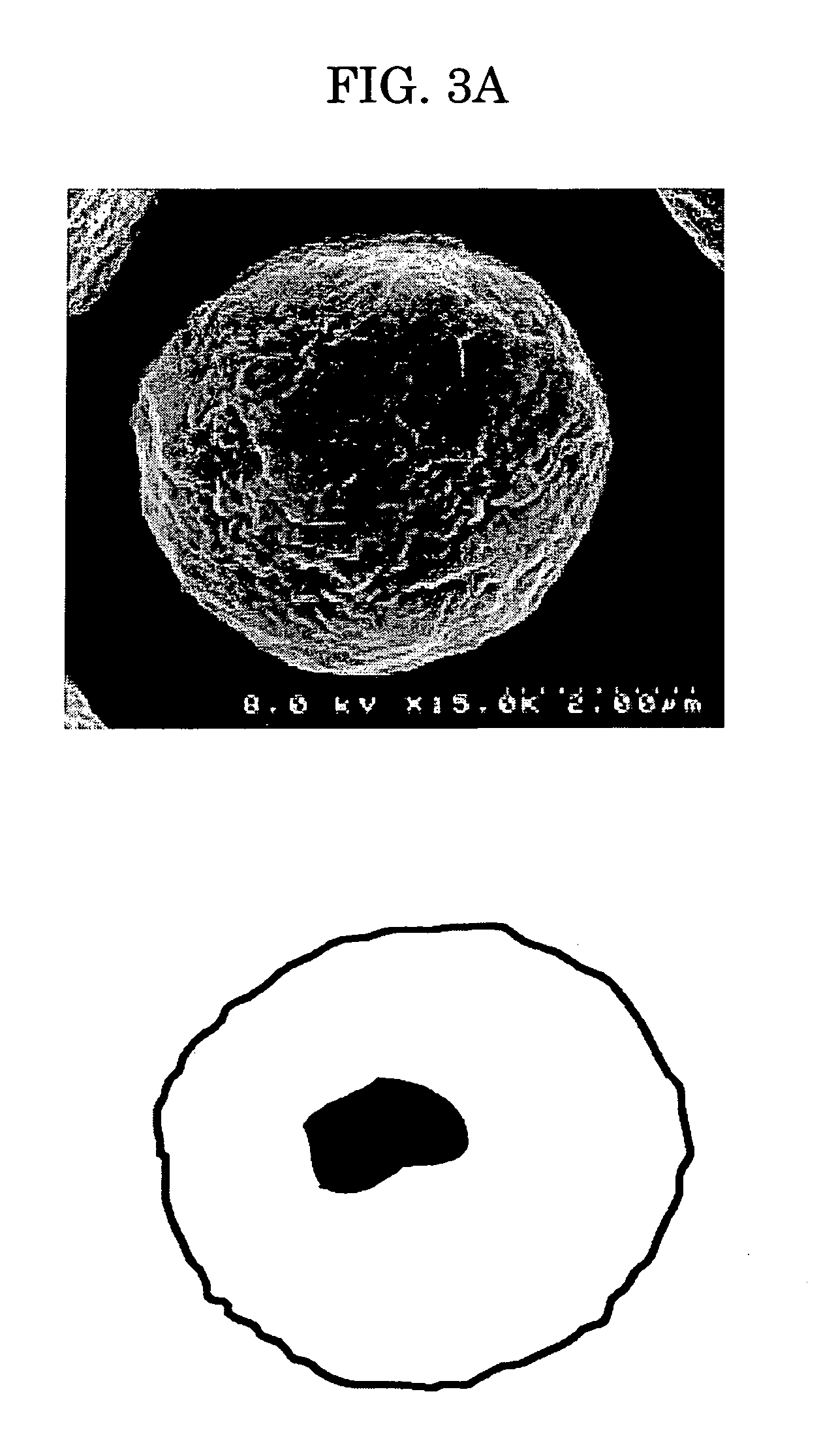Toner, developer, image developing apparatus, and image forming apparatus
a technology of image forming apparatus and developer, which is applied in the direction of electrographic process apparatus, electrographic process, instruments, etc., can solve the problems of affecting the transferring property and cleaning ability of toner, affecting the transferring property and cleaning ability, and affecting the sensitivity of toner to electric for
- Summary
- Abstract
- Description
- Claims
- Application Information
AI Technical Summary
Benefits of technology
Problems solved by technology
Method used
Image
Examples
example 1
Synthesis of Organic Fine Particle Emulsion
[0157]To a reaction vessel provided with a stirrer and a thermometer, 683 parts of water, 11 parts of sodium salt of the sulfuric acid ester of methacrylic acid ethylene oxide adduct (ELEMINOL RS-30, manufactured by Sanyo Chemical Industries, Ltd.), 80 parts of styrene, 83 parts of methacrylic acid, 110 parts of butyl acrylate, 12 parts of butyl thioglycollate, and 1 part of ammonium persulphate were introduced, and stirred at 400 rpm / minute for 15 minutes to obtain a white emulsion. The white emulsion was heated, the temperature in the system was raised to 75° C. and the reaction was performed for 5 hours. Next, 30 parts of an aqueous solution of 1% ammonium persulphate was added, and the reaction mixture was matured at 75° C. for 5 hours to obtain an aqueous dispersion liquid of a vinyl resin (copolymer of styrene-methacrylic acid-butyl acrylate-sodium salt of the sulfuric acid ester of methacrylic acid ethylene oxide adduct). This aqueou...
example 2
[0174]A toner was obtained in the same manner as Example 1 except that the process for emulsification and solvent removal was changed to the conditions as described below.
Emulsification and Solvent Removal
[0175]In a vessel, 749 parts of “pigment / WAX dispersion liquid 1,” 115 parts of “prepolymer 1” and 2.9 parts of “ketimine compound 1” were placed and mixed at 5,000 rpm for 2 minutes by a TK homomixer (manufactured by TOKUSHU KIKA KOGYO CO. LTD.), then 1,200 parts of “aqueous phase 1” were added to the vessel and mixed in the TK homomixer at a rotation speed of 13,000 rpm for 10 minutes to obtain “emulsion slurry 2.”
[0176]“Emulsion slurry 2” was placed in a vessel equipped with a stirrer and a thermometer, then the solvent was removed at 30° C. for 6 hours and the product was matured at 45° C. for 5 hours to obtain “dispersion slurry 2.”
example 3
[0177]A toner is obtained in the same manner as Example 1 except that the process for emulsification and solvent removal was changed to the conditions as described below.
Emulsification and Solvent Removal
[0178]In a vessel, 749 parts of “pigment / WAX dispersion liquid 1,” 115 parts of “prepolymer 1” and 2.9 parts of “ketimine compound 1” were placed and mixed at 5,000 rpm for 2 minutes by a TK homomixer (manufactured by TOKUSHU KIKA KOGYO CO. LTD.), then 1,200 parts of “aqueous phase 1” were added to the vessel and mixed in the TK homomixer at rotation speed of 13,000 rpm for 40 minutes to obtain “emulsion slurry 3.”
[0179]“Emulsion slurry 3” was placed in a vessel equipped with a stirrer and thermometer, then the solvent was removed at 30° C. for 8 hours and the product was matured at 45° C. for 5 hours to obtain “dispersion slurry 3.”
PUM
| Property | Measurement | Unit |
|---|---|---|
| height | aaaaa | aaaaa |
| number mean diameter | aaaaa | aaaaa |
| particle diameter | aaaaa | aaaaa |
Abstract
Description
Claims
Application Information
 Login to View More
Login to View More - R&D
- Intellectual Property
- Life Sciences
- Materials
- Tech Scout
- Unparalleled Data Quality
- Higher Quality Content
- 60% Fewer Hallucinations
Browse by: Latest US Patents, China's latest patents, Technical Efficacy Thesaurus, Application Domain, Technology Topic, Popular Technical Reports.
© 2025 PatSnap. All rights reserved.Legal|Privacy policy|Modern Slavery Act Transparency Statement|Sitemap|About US| Contact US: help@patsnap.com



